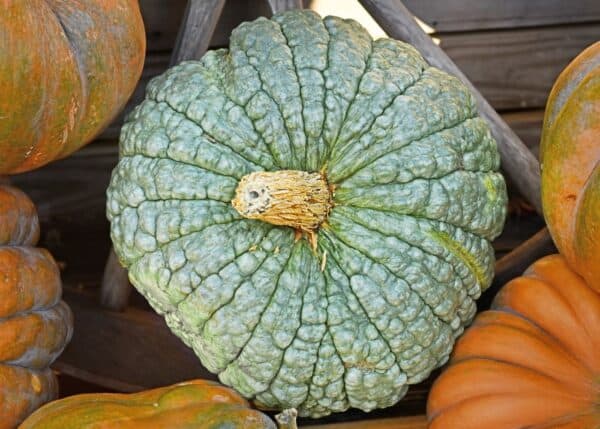Moranga pumpkins are best known for their pinky-orange peel color, but this cultivar is also a gourmet culinary variety. Their flattened shape with deep ribs down the side makes them perfect for fall decor that can transition into a cozy kitchen ingredient in the wintertime.
Introduction to the Moranga pumpkin
The Moranga pumpkin is a Brazilian heirloom winter squash cultivar known for its light pink peel and culinary versatility. This old open-pollinated variety is a cultivar of Cucurbita maxima, and is botanically related to modern pink-colored pumpkin varieties like the ever-popular Porcelain Doll pink pumpkin.
Moranga pumpkins are medium-sized, usually weighing about 5-10 pounds each. They have a flattened round shape with deep ribs down the side. The rind matures to either a light pink or coral salmon color, sometimes with lightly-colored stripes.
“Moranga” is a Portuguese word that translates simply to “Squash” in English. But when gardeners refer to ‘Moranga’ pumpkins, they are generally referring to this particular cultivar. In its native Brazil, the ‘Moranga’ variety is sometimes called “Abóbora Moranga” (source: West Coast Seeds), which roughly translates to “Pumpkin Squash”.
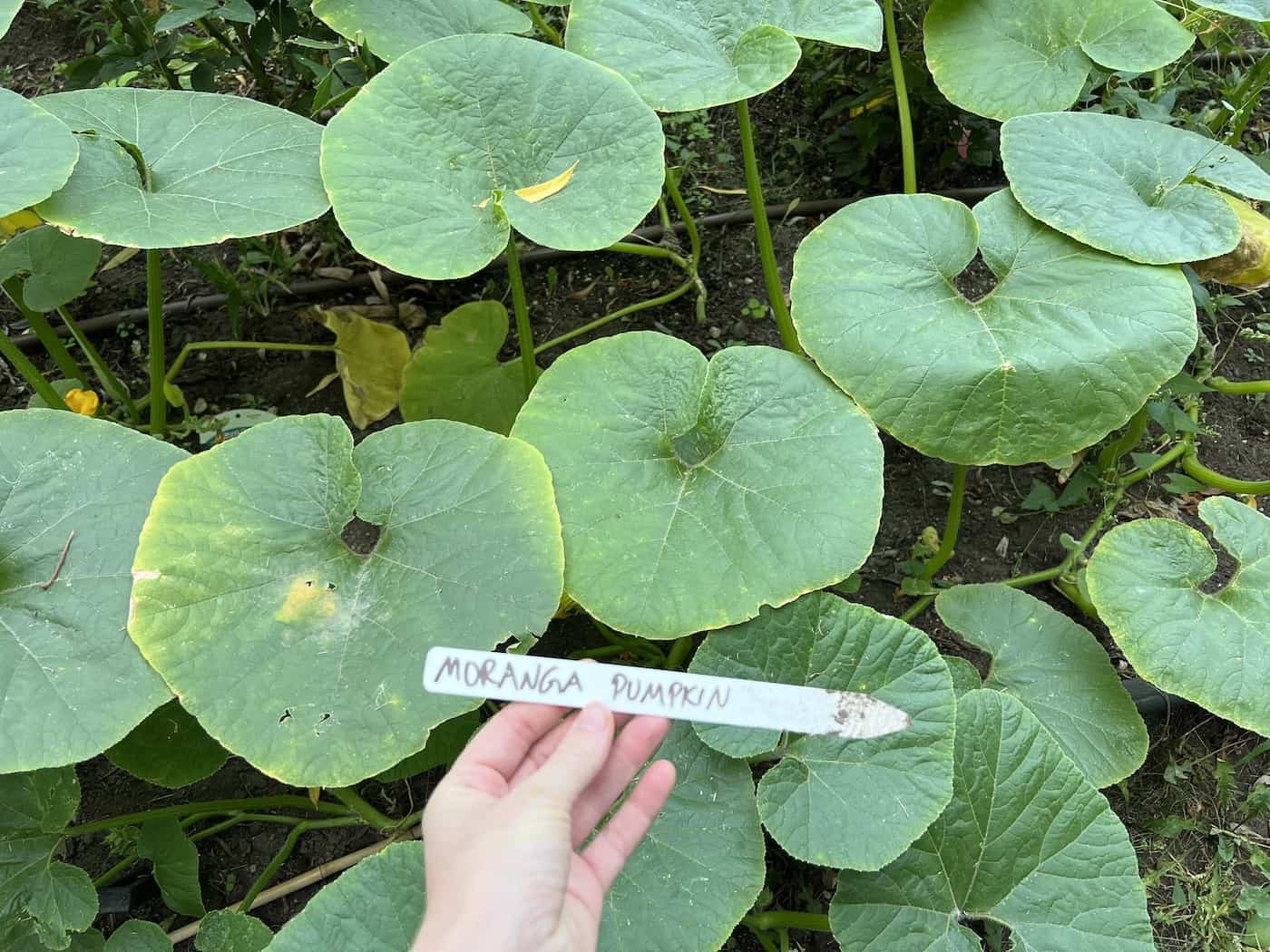
How to grow Moranga pumpkins
Moranga pumpkins are just as easy to grow as any other variety. Let’s look at the basics for how to grow your own pumpkins:
When to plant pumpkins
Pumpkins are warm-season vegetables and they do not like cold weather. The ‘Moranga’ cultivar, in particular, was developed in Brazil and is not at all cold hardy. Wait until nighttime temperatures are above about 70°F (21°C) before planting pumpkins outdoors. Ideally, the soil temperature should also reach 70°F (21°C) for optimal seed germination.
Moranga pumpkins typically have a growing season of 90-100 days. Count backward from your area’s first expected fall frost date to determine the best time to plant. If there are not enough warm days in the growing season, you may have to start your seeds indoors. While direct-sowing is usually better for the health of the plant, those in cold climates may not have the time span necessary for the fruits to ripen.
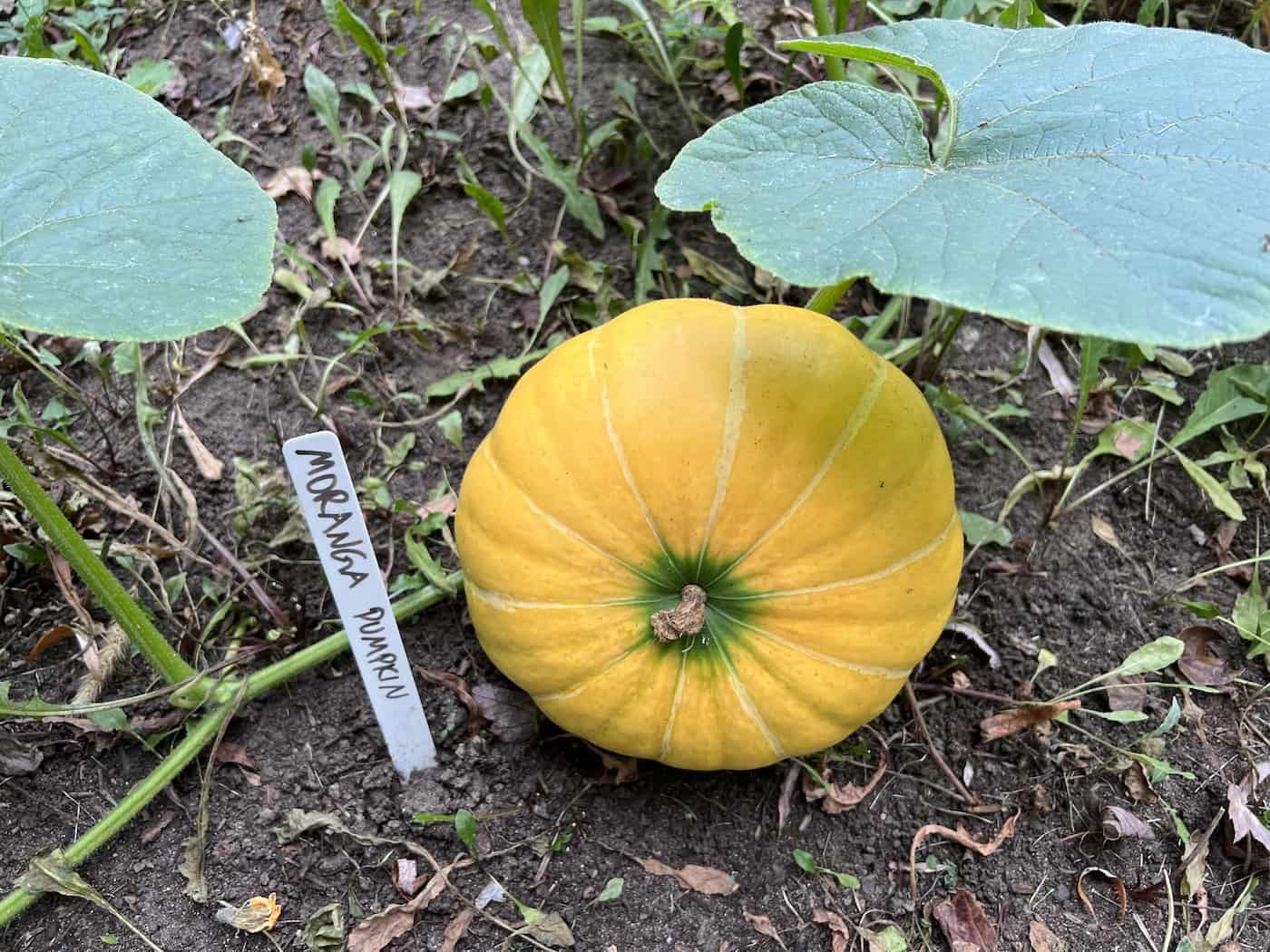
Where to plant pumpkins
Sunlight is crucial for photosynthesis and fruit development. Choose a location that receives at least 6-8 hours of full sunlight daily.
Since pumpkin plants sprawl, allocate a space of at least 4 between plants. While these plants don’t get quite as big as some other varieties, they are still large and in charge in the garden.
Pumpkins prefer well-draining soil rich in organic matter. Aim for a pH level of 6.0 to 7.5 (but do know that pumpkins are not terribly fussy). Before planting, amend the soil with compost or well-decomposed manure to enrich it.
How to plant pumpkin seeds
Loosen the soil to a depth of 12 inches with a shovel. Remove any weeds, stones, or other plant debris (by hand). Create raised mounds or hills (about 4 feet apart) to promote better drainage and soil warmth.
Soak your seeds in clean water for an hour before planting (if you have time). Then plant 2 or 3 seeds per hill, sowing them about 1 inch deep. As seedlings emerge and develop, thin them to the strongest plant per hill. Don’t pull out the weaker seedlings. Just trim them off at their base to avoid disturbing the roots of the remaining plant.
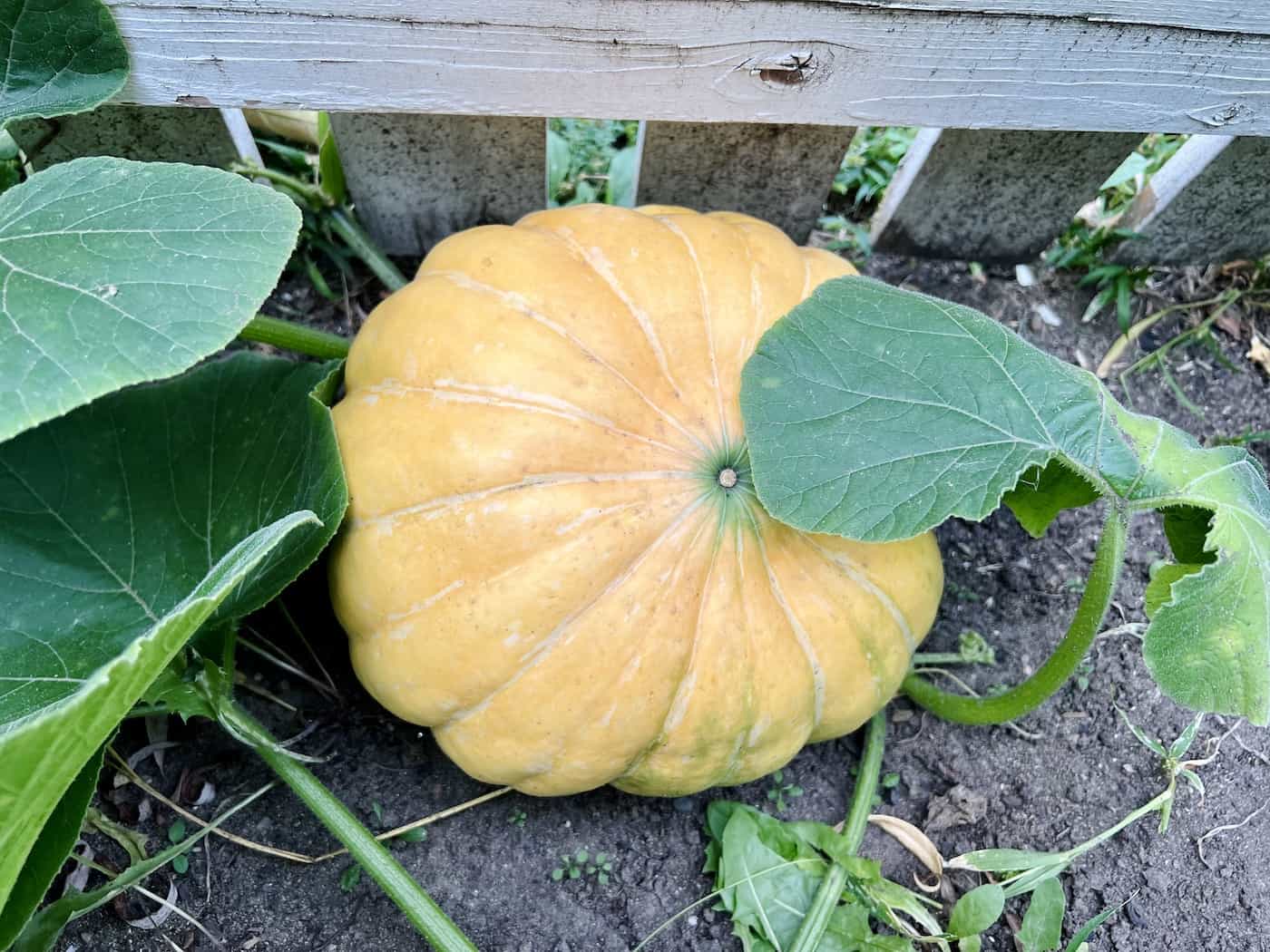
Caring for growing pumpkin plants
Pumpkins grow best with consistently available water, especially during the flowering and fruiting stages. Water deeply and regularly, aiming for the soil to remain consistently moist but not soggy. Watering the soil at the base of the plant is generally much better for plant health than letting the leaves get wet on a regular basis. A few weeks after planting, feed your pumpkins with a balanced fertilizer if you like.
Watch for blossoms to appear on the plant. Each pumpkin plant will have both male and female blossoms, with the male blossoms generally appearing first. Planting pollinator favorites like bee balm, lavender, and sunflowers can help to draw beneficial bees to the area.
Monitor plants for common pests like cucumber beetles and squash bugs. Fungal diseases can be minimized by ensuring proper spacing for air circulation and watering at the soil level, avoiding wetting the leaves. Keep an eye on your plants for hungry critters!

Harvesting ripe pumpkins
A ripe Moranga pumpkin will have a pink-orange color. The skin gets harder as the pumpkin matures, and the stem will start to shrivel and dry.
Harvest the pumpkins when the rinds become very hard. Use sharp pruning shears or a knife to cut the pumpkin from the vine, leaving several inches of stem attached. This prolongs the pumpkin’s shelf life.
If you’re storing Moranga pumpkins, let them cure in a sunny spot for about a week to harden the skin further. Once cured, store in a cool, dry place (at about 60°F if possible).
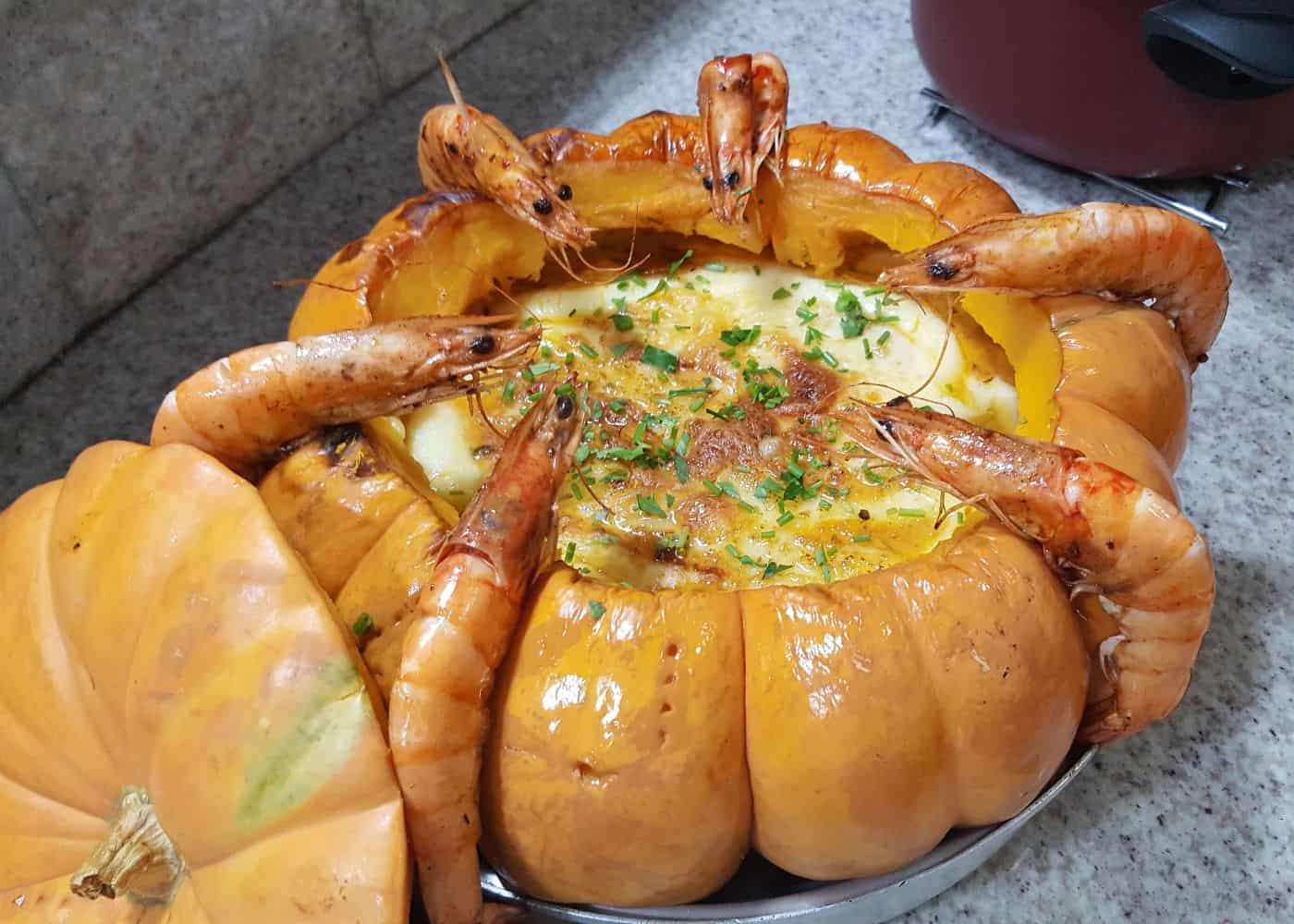
Culinary applications for the Moranga pumpkin
The Moranga pumpkin has sweet flesh and a fine texture. It is well-suited to both sweet and savory recipes.
“Traditionally used to make a dish called ‘Camarão na Moranga’ which means ‘shrimps in a squash’.”
Baker Creek Heirloom Seeds








